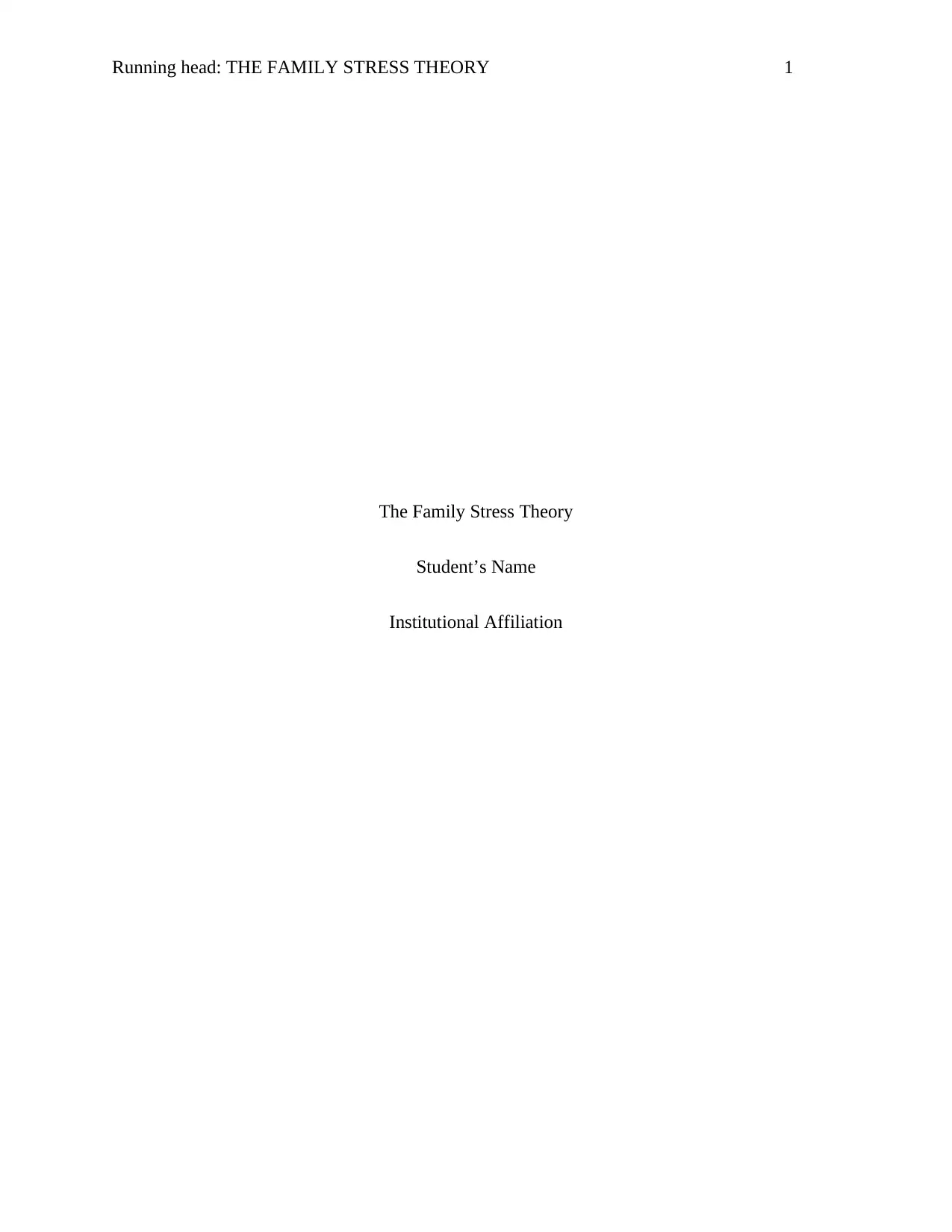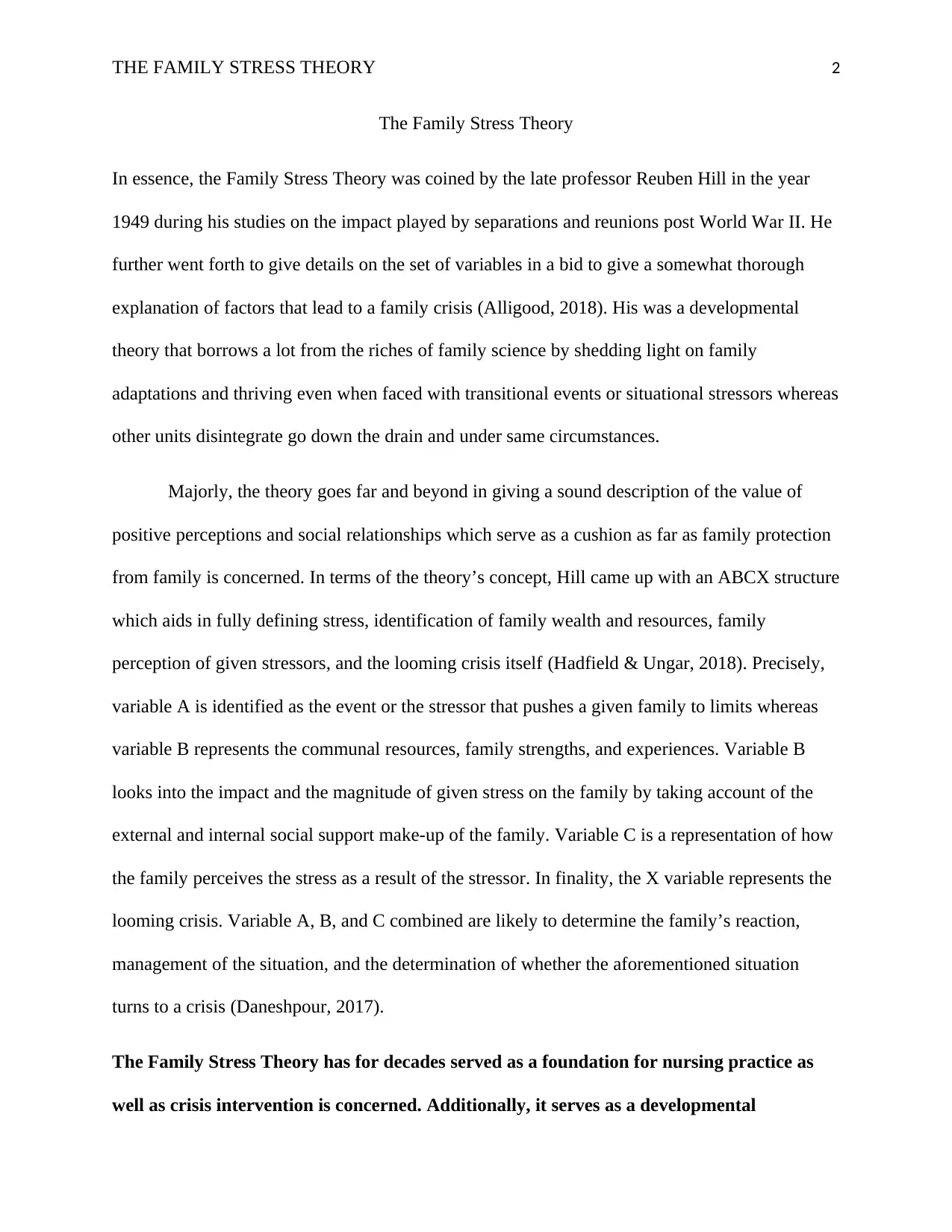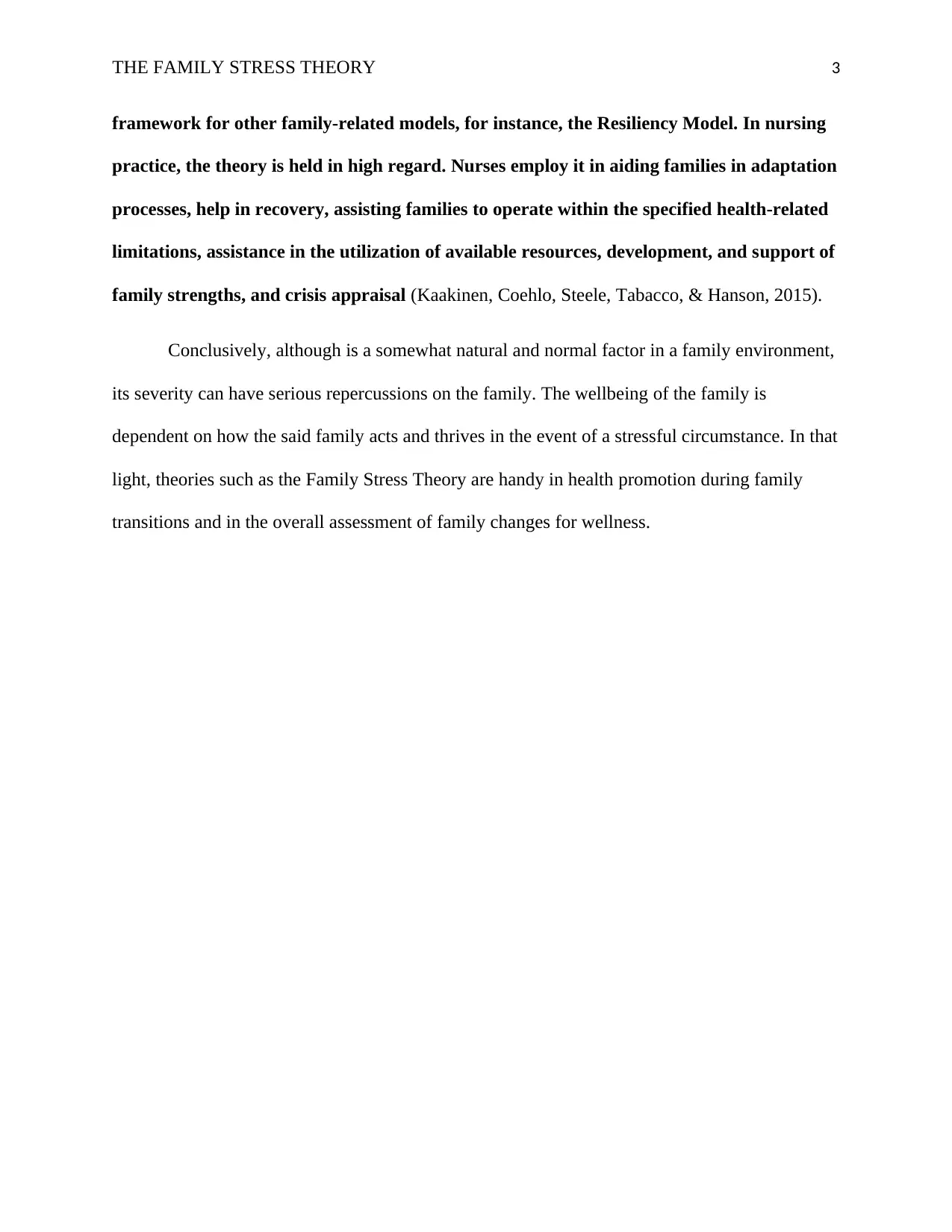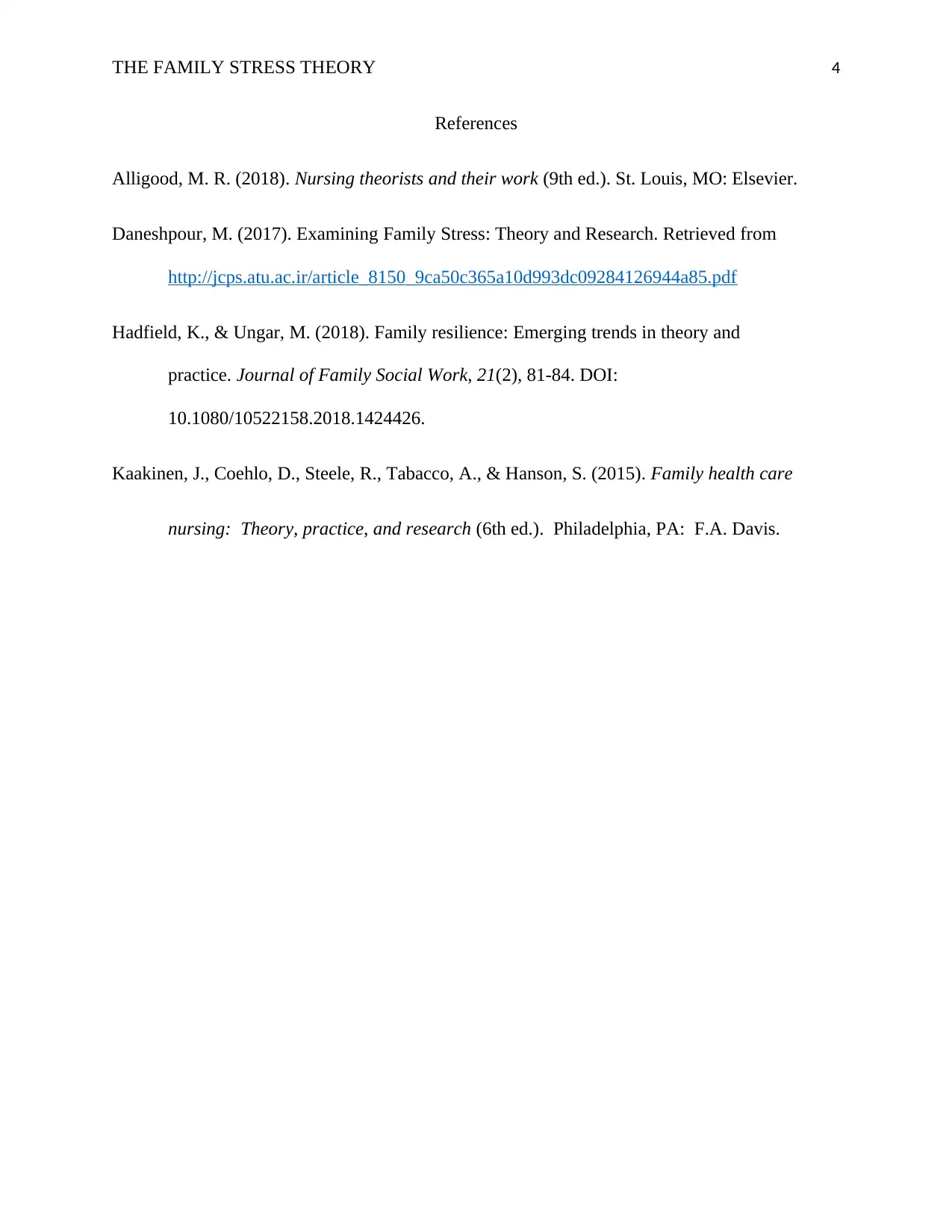Family Stress Theory: History, Concepts, and Nursing Applications
VerifiedAdded on 2023/03/29
|4
|572
|339
Discussion Board Post
AI Summary
This discussion post provides an overview of the Family Stress Theory, originally coined by Reuben Hill in 1949, which examines the impact of stressors on families, particularly during times of separation and reunion. The theory emphasizes the importance of positive perceptions and social relationships in protecting families from crisis. It uses the ABCX model to define stress, identify family resources, assess family perception of stressors, and understand the resulting crisis. Variable A represents the stressor, B represents family resources, C represents the family's perception of the stressor, and X represents the crisis. The theory has been foundational in nursing practice, aiding nurses in helping families adapt, recover, utilize resources, develop strengths, and appraise crises. The post concludes that while stress is normal, its severity can impact family well-being, highlighting the importance of theories like the Family Stress Theory in promoting family health and wellness during transitions. The post includes relevant references to support its claims.
1 out of 4





![[object Object]](/_next/static/media/star-bottom.7253800d.svg)